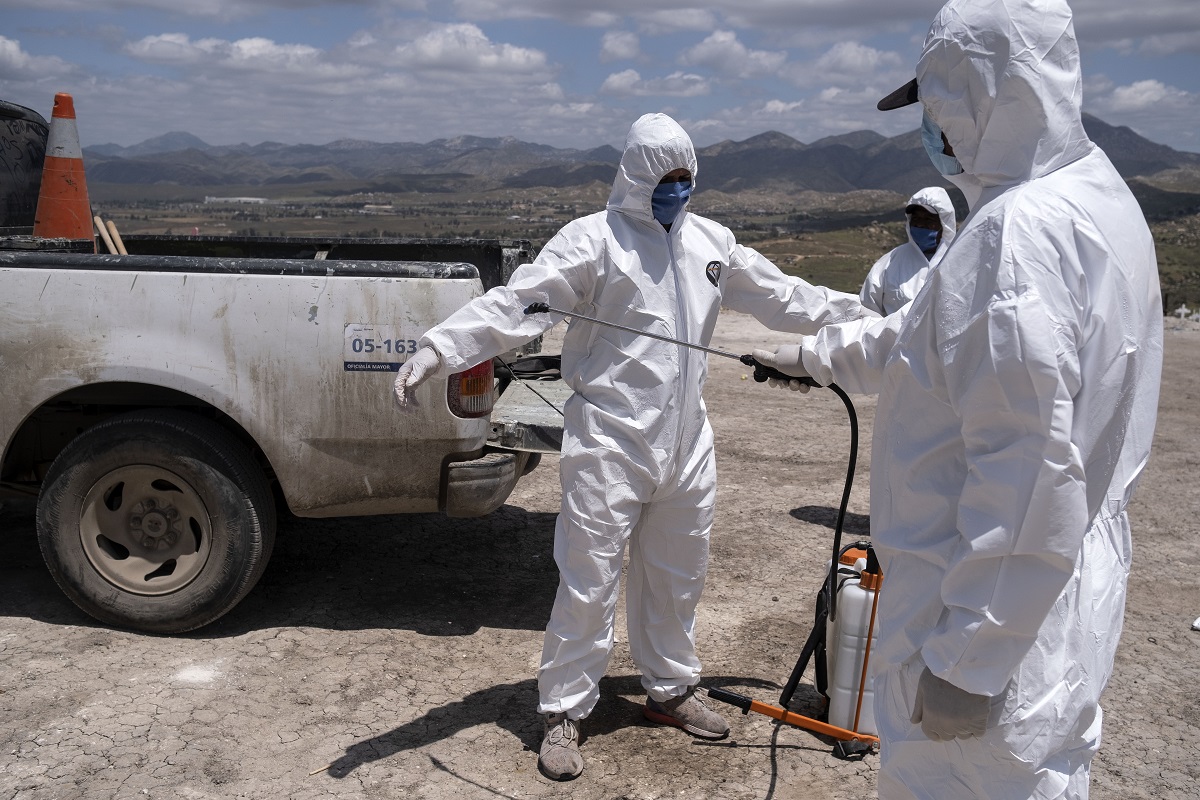Trump announces US withdrawal from World Health Organisation
Trump has long been critical of the WHO, and his administration formally withdrew from the organisation in July 2020 as the Covid-19 pandemic continued to spread.
The study, published in the journal PNAS, examined the pros and cons of silent transmission on the long-term survival of a virus.

Representation image
Disease control strategies employed by governments can dramatically alter the evolution of pathogens like the novel coronavirus, according to a study which says such measures can change the extent of symptoms a spreading virus causes in infected individuals.
The study, published in the journal PNAS, examined the pros and cons of silent transmission on the long-term survival of a virus.
Advertisement
According to the researchers, including those from the Princeton University in the US, the rapid spread of SARS-CoV-2 throughout the world is fuelled in part by the virus’ ability to be transmitted by people who are not showing symptoms of infection.
Advertisement
The findings, they said, could inform how public health experts plan control measures such as quarantines, testing, and contract tracing, adding that such strategies themselves may alter the evolutionary course of pathogenic viruses.
In the current study, the scientists sought to understand if viruses transmitting without symptoms enable the pathogen to infect greater numbers of people, or if the lack of symptoms lessen transmission and reduce the pathogen’s long-term survival.
“An asymptomatic stage for various reasons could provide certain benefits to the pathogen,” said Bryan Grenfell, study co-author from Princeton University.
“With the COVID-19 crisis, the importance of this asymptomatic phase has become extremely relevant,” Grenfell said.
He said that viruses, like more complex organisms, can also evolve by natural selection.
Mutation of the viral genome generates new variants of the pathogen, and if these changes benefit their transmission, then that strain of the virus will spread, the researchers explained.
As mutants spread across a population, they said, the strains with strategies that contribute to their success survive, while those with infection methods that don’t promote their transmission — such as killing the host before the virus can transmit to new susceptible individuals — will eventually die out.
“Viral evolution involves a tradeoff between increasing the rate of transmission and maintaining the host as a base of transmission,” said Simon Levin, another co-author of the study from Princeton University.
“Species that navigate this tradeoff more effectively than others will come to displace those others in the population,” Levin said.
According to the scientists, this process can be seen from the viewpoint of a game between the pathogen and the host.
“These are host-parasite interactions, and thinking about them from an evolutionary perspective is something we, along with many other scientists, have been interested in for a long time,” Levin added.
Citing the example of the COVID-19 pandemic, the researchers said a silent infection makes control strategies — such as identification, quarantine, and contact tracing — difficult to implement, offering short-term advantages to the virus.
Infectious people who lack symptoms tend to go about their lives, coming in contact with many susceptible people, they explained.
On the contrary, the study said a person who develops strong symptoms like fever and cough may be more likely to self-isolate by staying home from work.
However there are also drawbacks to this strategy, the researchers said.
Asymptomatic people, they explained, may generate fewer infectious particles and thus fewer will escape from the infected person such as in a violent sneeze or forceful cough, reducing the overall transmission over time.
Using modelling methods to understand how the flu virus spreads, the scientists explored the tradeoffs between these scenarios.
“I wondered why asymptomatic flu would arise in evolution, and so as a team we formulated a simple model to try to understand why evolution would favour such behaviour,” said Chadi Saad-Roy, a co-author of the study at Princeton.
To study the consequences of symptomless transmission, the scientists made modifications to a standard mathematical model of how a disease spreads through a population.
In the model, a region’s population is broken up into compartments representing susceptible, infected and recovered individuals.
In the team’s model, the researchers further broke the “infected” compartment into two stages.
In the first, they could vary the level of symptoms so that some individuals will have no symptoms, others will have some symptoms and others will have significant symptoms.
On the other hand, individuals in the second stage are fully symptomatic.
The scientists said they also focused on the evolutionary consequences of exhibiting varying levels of symptoms in the first stage.
According to the study, successful strategies emerged when the first stage of infection was completely symptomless, fully symptomatic, and somewhere in between.
It also noted that the range of being symptomatic, from no symptoms to maximum symptoms, could be altered by small changes in disease control strategies.
Based on these findings, the scientists said disease control strategies employed by public health experts and policy makers could, over long time periods, influence which strategy a pathogen deploys, and thus have impacts on the course of an epidemic.
The model, according to Saad-Roy, helps explain several epidemiological models being employed to understand diseases.
“It’s a general framework to explain a broader range of epidemiological models,” he said.
Advertisement